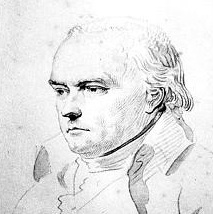Emmanuel Crétet
| Emmanuel Crétet | |
|---|---|
 |
|
| Born |
10 February 1747 Le Pont-de-Beauvoisin, Savoie, France |
| Died | 28 November 1809 (aged 62) Paris, France |
| Nationality | French |
| Occupation | Merchant, financier and politician |
| Known for | First governor of the Banque de France |
Emmanuel Crétet, Comte de Champmol (10 February 1747 – 28 November 1809) was a French merchant, financier and politician. He was the first governor of the Banque de France.
Emmanuel Crétet was born in the village of Le Pont-de-Beauvoisin, Savoie, on 10 February 1747, the youngest of six children of a timber merchant. He studied with the Oratorians before joining a merchant in Bordeaux. He made seven voyages to the West Indies, on some of which he commanded the ship. He spent time in England, where he acquired liberal views. He then settled in Paris in the trading house of an uncle. He inherited his uncle's business. Shortly before the French Revolution (1789–1799) he had become Director of a fire insurance company.
Crétet disapproved of the excesses of the Terror. He moved to Dijon, where he became a trader. He purchased some of the national assets that were sold by the revolutionary government. On 4 May 1791 he bought the chartreuse of Champmol in the department of Côte-d'Or, founded in 1384 and burial place of the Valois Dukes of Burgundy. He destroyed the church of the former monastery and most of the buildings, apart from those he kept for his own use or to decorate the garden. The next year the tombs and coffins of the dukes were transported to Saint-Bénigne. The altar and some woodwork from the church was also reassembled.
Crétet entered politics in 1795. He was elected to represent Côte-d'Or in the Council of Ancients, the Upper House of the French Directory, taking his seat at the start of Brumaire, year IV. There he began a political career dedicated to economic and financial administration.
Crétet supported the coup-d'état of 18 Brumaire (9 November 1799) in which Napoleon came to power as First Consul. On 4 Nivôse year VIII he was appointed both to the Senate and to the Council of State. He was named Councilor of State in charge of bridges and roads. He was willing to support new construction techniques, such as iron bridges in Paris. He undertook various canal projects, of which the Saint-Quentin canal was the first.
...
Wikipedia
